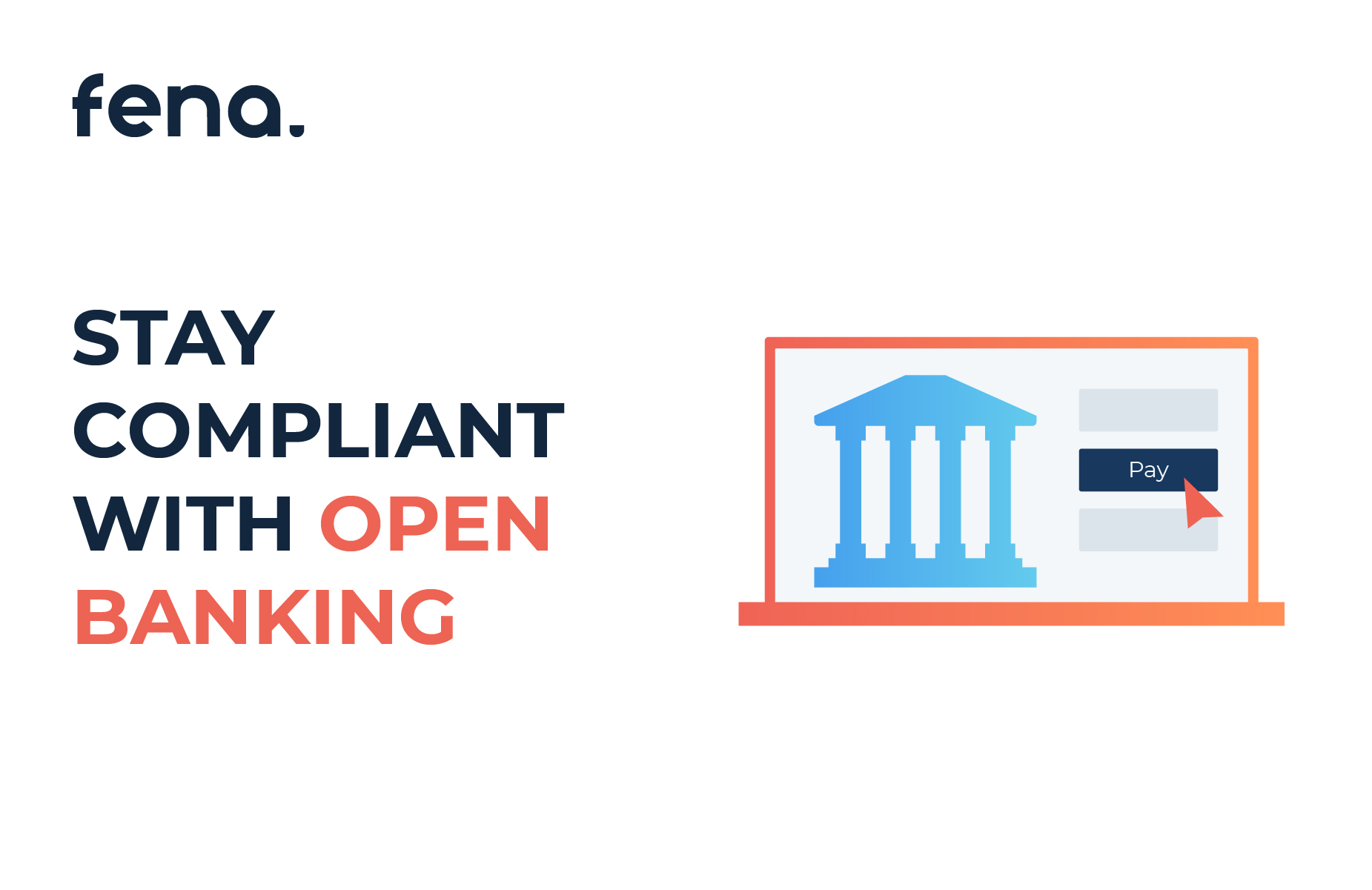Stay compliant with Open Banking: Everything You Need to Know
by Gosia Furmanik on June 16, 2022

Have you built, or are you building a new fintech application? If so, you'll be aware of the importance and stresses of keeping compliant. However, despite the challenges, open banking is here to help reduce the burden and make both yours and your customers’ lives easier.
Compliance can be a nightmare that does not get easier with time - it’s not a one off exercise. Failing to guarantee the utmost compliance can result in hefty fines, which you'll want to avoid.
Luckily, compliance is getting that much-needed support. With the introduction of new regulations, like the Payment Services Directive 2 (PSD2), open banking has been released onto the market.
Surprisingly for many, it can help with many compliance issues. To learn more about this, we strongly suggest you read the below content:
How to keep in line with compliance using open banking

Open banking was released into the market back in 2019 when the PSD2 regulation was enforced. Since then, the rest is history, with as many as 5 million customers already using open banking services in the UK.
Without question, it's a significant uptake, which is only expected to increase in the coming years. Many fintech applications, like investing and wealth management apps, now incorporate open banking solutions both for top-ups and withdrawals, and to aid with the compliance burden.
IIf compliance is new to you, the below provides a few key considerations as you build and scale your business:
Plan for compliance during early app development
For a new or start-up fintech application, compliance can be overwhelming. It's costly, takes time, and is remarkably confusing.
Because of this, many try to avoid scrutiny as much as possible and prolong their compliance problems. However, you can only run from compliance for so long, but eventually it will catch up.
Failing to plan and execute efficiently can result in enormous problems in the future. For example, if you don't abide by GDPR then you’ll likely be forced to cease operations until you are compliant, or risk receiving hefty fines. In the UK, fines can reach £17.5 million or 4% of annual global turnover – whichever is greater.
Be familiar with the common fintech regulations and regulatory bodies
For fintech apps, many regulations will be specific to the activities performed. You'll need to become knowledgeable on these and the regulatory bodies involved. Some of the basics are below:
FCA - The Financial Conduct Authority is one of the primary financial regulatory bodies in the UK. Fintechs conducting regulated activities in the UK must be authorised by the FCA
PRA - The Prudential Regulation Authority supervises financial institutions such as banks, insurers and major investment firms
PSD2 - Payment services directive 2, which protects consumers when they make purchases online
SCA - Strong customer authentication - an aspect of PSD2 which ensures that payments are made with multi-factor authentication to improve security of payments
GDPR - The UK General Data Protection Regulation is the UK's data privacy law that governs the processing of personal data from individuals inside the UK
Anti-Money Laundering Regulations - Financial service firms, including fintechs, must have appropriate procedures and policies in place to identify and prevent money laundering
Develop a secure application
One of the most tightly regulated acts is the GDPR in Europe and the U.K. With fines reaching upwards of £17.5 million or 4% of an organisation's turnover (whichever is greater), it's essential to stay compliant.
Fintech applications are possibly the most targeted platforms for data hackers. Therefore, guaranteeing a secure network is essential to avoid any compliance issues. After all, noncompliant applications can be a more favourable option for hackers than compliant ones.
For this reason, build secure applications from the start and ensure it follows all the best practice data security and safety precautions.
You can help stay compliant by using an opening banking solution. Open banking is one of the newest technologies available and offers the utmost safety and help with compliance to all users.
Read the following to learn how open banking can help applications that offer regulated (and non-regulated) services. Here we'll detail how open banking software can help you stay within the regulations.
How open banking can help with compliance rules

As mentioned, open banking can help with compliance significantly. However, not many app developers are aware of this because the regulation for these programs was only introduced back in 2019.
Open banking can help in many incredible ways ranging from user experience, efficiency, and more. However, something else it excels in is compliance. Here's how:
Money laundering & KYC - AML security and compliance is significant, with penalties reaching unseen amounts. Opening banking enables you to quickly verify users bank accounts by matching the name they have signed up to your app with against the name on the account, and raising a red flag if there is a mismatch
Bank-level security - Open banking solutions are PSD2 compliant, and offer bank-level security. Payments are processed by the banks, using traditional bank payment rails. This means you can be sure that any money transfer is secure
Data security - open banking powered payments do not require the end user to input any bank or card details, so these are not saved to any databases and reduce the risk of a data breach and malicious actors obtaining your customer’s payment details
Strong customer authentication - all payments are subject to strong customer authentication (SCA) - which requires the end user to use face ID, biometrics or a secure password to authorise any payments via their banking app
Fraudulent transfers - By verifying the bank account used for transactions, enforcing SCA and not holding any confidential payment details, the risk of fraudulent transactions is minimised, and card not present fraud can be eliminated
API-only data transferring - For an open banking solution to be compliant, all data must be passed through trusted third-party providers (TTP) via secure APIs. No more emails back and forth with photos of customer bank statements or proof of ID
Source of funds verification - using open banking data APIs, customers can provide you with read only access to their bank statements, allowing you to verify the source of funds without needs to request photos or scans of their bank statements
Open banking has enabled a step-change in payment security and regulatory compliance, helping both fintechs and their customers to remain safe and compliant, whilst reducing friction.
Conclusion
Now you understand the basics of fintech compliance and open banking’s role, you should have enough information about how open banking can help with compliance.
With these types of solutions being new, many misunderstand or underestimate their value. However, they are easily implemented, and far exceed many traditional approaches to compliance
At Fena, we offer an open banking solution that many satisfied clients trust. With our solutions, you can effortlessly access important pieces of compliance data and ensure all customer data is secured through trusted APIs.
Check out our website for more information about our applications and become compliant today. Remember, tackling compliance from the start will reduce the burden later on.